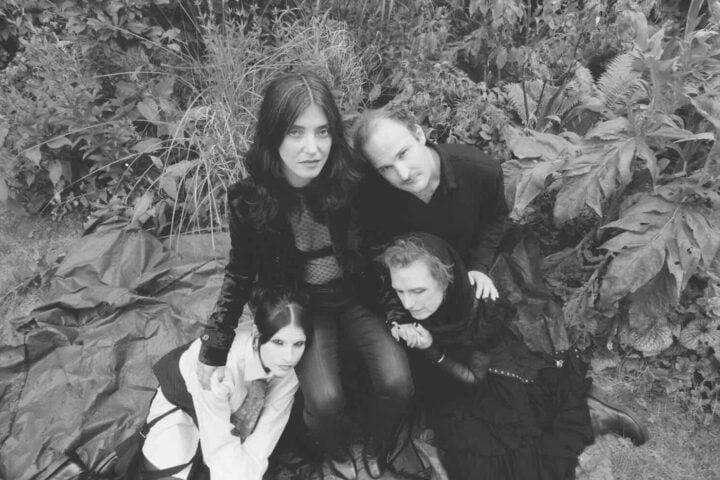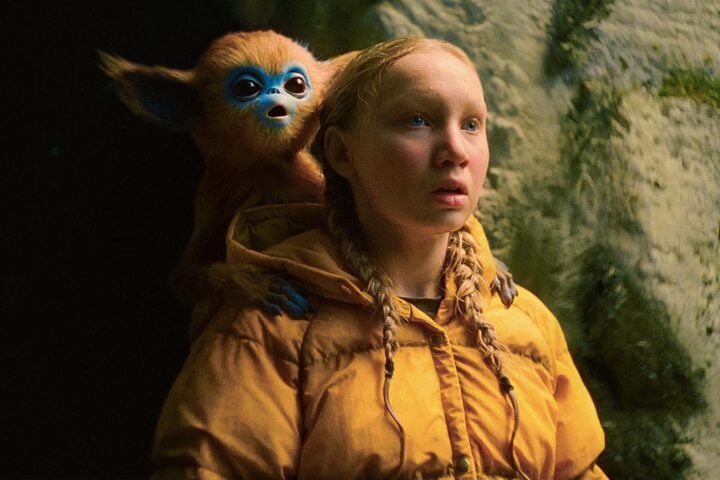Zoe Lister-Jones and Daryl Wein’s exceptionally laidback How It Ends is seemingly out to prove that the apocalypse doesn’t need to be that big of a deal. A disaster film that dispenses with the usual anxiety-building scene-setting, it starts on a sunny Los Angeles day whose postcard prettiness is only marred by the occasionally visible arc of a meteor approaching Earth. The space rock is due to hit a little after midnight, at which point everyone in the film expects that they will die. Until then, all the characters are just trying to live their lives and be their best selves. It’s the ironically twee counterpoint to something like the gross-out hellfire that defined Seth Rogen and Evan Goldberg’s This Is the End.
Lister-Jones plays Liza, a sorta-hip Angeleno who pocketed a ton of money from selling an app and now seems to spend most of her time messing up her relationships. Waking up on the morning of her ostensibly last day alive, she doesn’t seem particularly worried about doomsday. Nobody in How It Ends really is. Liza is also astoundingly relaxed about the fact that she’s accompanied everywhere she goes by a walking and talking personification of her teenage self (Cailee Spaeny), who functions as an eye-rolling reality check on Liza’s more self-destructive thoughts and habits. When, later on, Liza realizes that people can see Young Liza, she and they barely blink an eye at this astounding development.
Redolent of Max Barbakow’s Palm Springs, even Todd Berger’s underrated black comedy It’s a Disaster, the film’s chill and even-tempered approach to the incredible, which allows for some quietly witty moments, is impressively sustained throughout. Given that the story is essentially a springboard for an alt-comedy revue in which Liza has a series of encounters with cameo performers (Nick Kroll, Lamorne Morris, Fred Armisen, among others), it’s remarkable that none of the actors go the manic route. Their characters mostly play out their final hours in a fairly upbeat daze, as if slightly stoned and just waking up after a long nap.
It’s possible that the news of disaster has been out there in the ether for so long that despair has been normalized. Or possibly the news came post-pandemic (the film was shot under Covid-19 restrictions) and everyone is just so burnt out from lockdowns and illness that annihilation seems like sweet relief. If nothing else, it explains why Liza starts her morning with a foot-high stack of pancakes, a glass of wine, and a visit to the weed shop.
Liza’s mission for her last day is to get to an apocalypse party being thrown by a friend (Whitney Cummings), who notes in a video message that “Pauly Shore’s coming.” That and to seek closure with a bunch of people in her life, which includes making amends with a friend (Olivia Wilde) she lost touch with over a guy; dumping out a life’s worth of unsaid emotions to her divorced and solipsistic parents (Bradley Whitford and Helen Hunt); pulling a reverse Say Anything on an ex, Larry (Lamorne Morris), who cheated on her; and reconnecting with the guy who got away (Logan Marshall-Green). But in a moment typical of the film’s sang-froid, Liza decides not to get in touch with Larry. Because “fuck that guy,” as Young Liza tells her.
How It Ends is more committed to these individual moments than any dramatic through line. But it’s so economical in its momentum, and its tone of comic wistfulness so uniform, that its string of tableaux rarely feels jerky. A few moments, such as when the Lizas start digging deeper into her fears, don’t quite land. Up until then, the film has mined zesty laughter from the self-involved people Liza runs across. This makes it difficult to take her fairly pedestrian insights as any kind of catharsis. Further complicating an emotional payoff is how the film mocks that kind of indulgent psychological self-diagnosing in a scene where, after Liza sees a street sign modified to read “You are enough,” she smirks and says, “Feels a little on the nose.”
By that point, though, How It Ends has built up enough good will that most audiences, particularly those seeing it in the midst of the pandemic and as such being all too familiar with listless fatalism, will likely cut Lister-Jones and Daryl Wein some slack. After all, many of us had bucket lists when the pandemic began, and even fewer of us will have crossed off as many items from them as Liza does here by the time our lives are ready to return to normal.
Since 2001, we've brought you uncompromising, candid takes on the world of film, music, television, video games, theater, and more. Independently owned and operated publications like Slant have been hit hard in recent years, but we’re committed to keeping our content free and accessible—meaning no paywalls or fees.
If you like what we do, please consider subscribing to our Patreon or making a donation.





